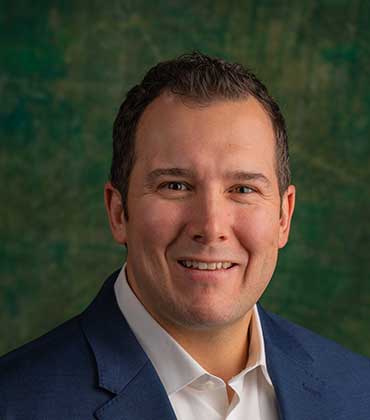Getting help for addiction can feel overwhelming because of the many choices available. You realize that outpatient treatment isn’t sufficient for you. However, you’re uncertain whether to choose residential treatment or a partial hospitalization program (PHP).
Here’s the thing: both options aim to help you build a stronger, healthier life without drugs or alcohol. But the way they do it—and the way they fit into your life—can be remarkably different.
At Jaywalker, we work with men every day who are weighing this exact choice. Some are fresh out of detox and need a safe, structured space to get their feet under them. Some people have already completed residential treatment. They need a step-down program that provides support but does not require them to live at the facility.
The important thing is to understand what each program offers and find the one that fits your recovery journey.
First, let’s discuss the level of care.
In-depth residential treatment delivers 24/7 support, structure, and supervision. Meanwhile, a partial hospitalization program offers substantial care, permitting you to go home to sleep each evening.
Here’s how they compare in the simplest terms:
Residential
You live at the treatment facility. You schedule your days with individual and group therapy, recovery activities, and health-focused routines. You’re in a safe, controlled environment away from triggers.
PHP
You spend most of your day at the facility—often 5–7 days a week—but return home in the evenings. You still get intensive therapy and support, but you’re practicing living at home without using.
Both can be incredibly effective. The question is: which option currently offers you the greatest chance of success?
What Is Residential Treatment?
Residential treatment involves checking in and residing at the facility for your treatment. Typically, this lasts for 30, 60, or 90 days.
Trained staff, therapists, and peers who are also in recovery surround you. The environment’s design helps you focus on healing without outside distractions or temptations.
The Substance Abuse and Mental Health Services Administration (SAMHSA) states that residential treatment provides the most structure. It also offers the best monitoring outside a hospital. For many men, this initial support is crucial. This is true, especially when they face withdrawal symptoms, strong cravings, or mental health issues.
24/7 care
Support personnel are always available to assist you during difficult times.
A completely sober environment
No access to drugs or alcohol, which lowers the risk of relapse.
Full focus on recovery
No juggling work, home, and treatment.
Peer connection
Living with other men who understand what you’re going through creates powerful accountability and brotherhood.
The main drawback is that residential treatment requires you to put everything else on hold. That’s great for some—it’s the break they need. But for others, it’s not realistic because of work, family, or financial obligations.
What Is a Partial Hospitalization Program (PHP)?
People sometimes call a partial hospitalization program “day treatment.” You spend the majority of the day at the facility—typically 6 to 8 hours—but return home in the evening.
PHP is typically more intense than regular outpatient programs. It usually includes individual therapy, group counseling, medication management, medical check-ups, and skill-building sessions.
Intensive care without full separation
You get structured evidence based therapy and support but still maintain your home life.
Practice real-world sobriety
You can test your coping skills in the evenings and bring challenges back to your treatment team the next day.
More affordable than inpatient care
Since room and board costs are excluded.
Flexibility
PHP can be a step-down from inpatient or a step-up from standard outpatient treatment.
Going home every night means more exposure to triggers. If your living environment isn’t stable or supportive, PHP can be more challenging in the early stages.
How to Decide Between PHP and Residential
The choice usually comes down to two things: how stable your home is and how much structure you need to stay sober right now.
If your living situation is chaotic, unsafe, or full of triggers, inpatient rehab removes you from that environment completely. It gives you the breathing room to focus solely on recovery without daily exposure to temptation.
If you have a supportive home and can stick to treatment hours, PHP can be a good choice. You can build recovery skills by staying connected to your life outside your treatment program.
Why Mental Health Matters in This Decision
It’s important to address mental health issues. This includes depression, anxiety, and trauma.
According to the National Library of Medicine, more than 60% of individuals with substance use disorders also face challenges with a mental health issue. Ignoring one while treating the other makes relapse much more likely.
At Jaywalker, our Residential and PHP programs offer mental health support. This is important because addiction is often just a symptom.
How Insurance Plays a Role
Insurance can play a part in the decision between PHP and Residential Treatment. Numerous insurance policies require a doctor’s recommendation to approve inpatient treatment. This is true for cases like dangerous withdrawal symptoms or recent relapses.
That’s why it’s smart to review your benefits before making a choice. At Jaywalker, we help men understand their insurance. This way, they can focus on what matters most—getting the right care during their recovery.
What Recovery Looks Like in Both Settings
- Learning coping skills that actually work in the real world
- Understanding and managing triggers
- Building a support network that sticks
- Creating a life that feels worth staying sober for
Partial Hospitalization Program in Colorado

There isn’t a universal solution available. For certain men, inpatient rehabilitation serves as the crucial support that helps them escape the downward spiral. For others, PHP is the bridge that helps them stay grounded while building a new way of living.
What matters most is honesty—about where you’re at, what you need, and what kind of support will actually help you move forward.
At Jaywalker, we’re here to help you figure that out. We will help you with both options. We will discuss what has worked and what has not in the past. Then, we will create a treatment plan that fits your life, not just your addiction.
FAQ: PHP vs. Inpatient Rehab
Q: Which is more effective, PHP or inpatient rehab?
Q: Can I start with PHP and move to inpatient care later?
Q: How long do PHP and inpatient programs last?
Q: Will I get mental health care in both programs?
Related Blogs on Partial Hospitalization Programs (PHP)






